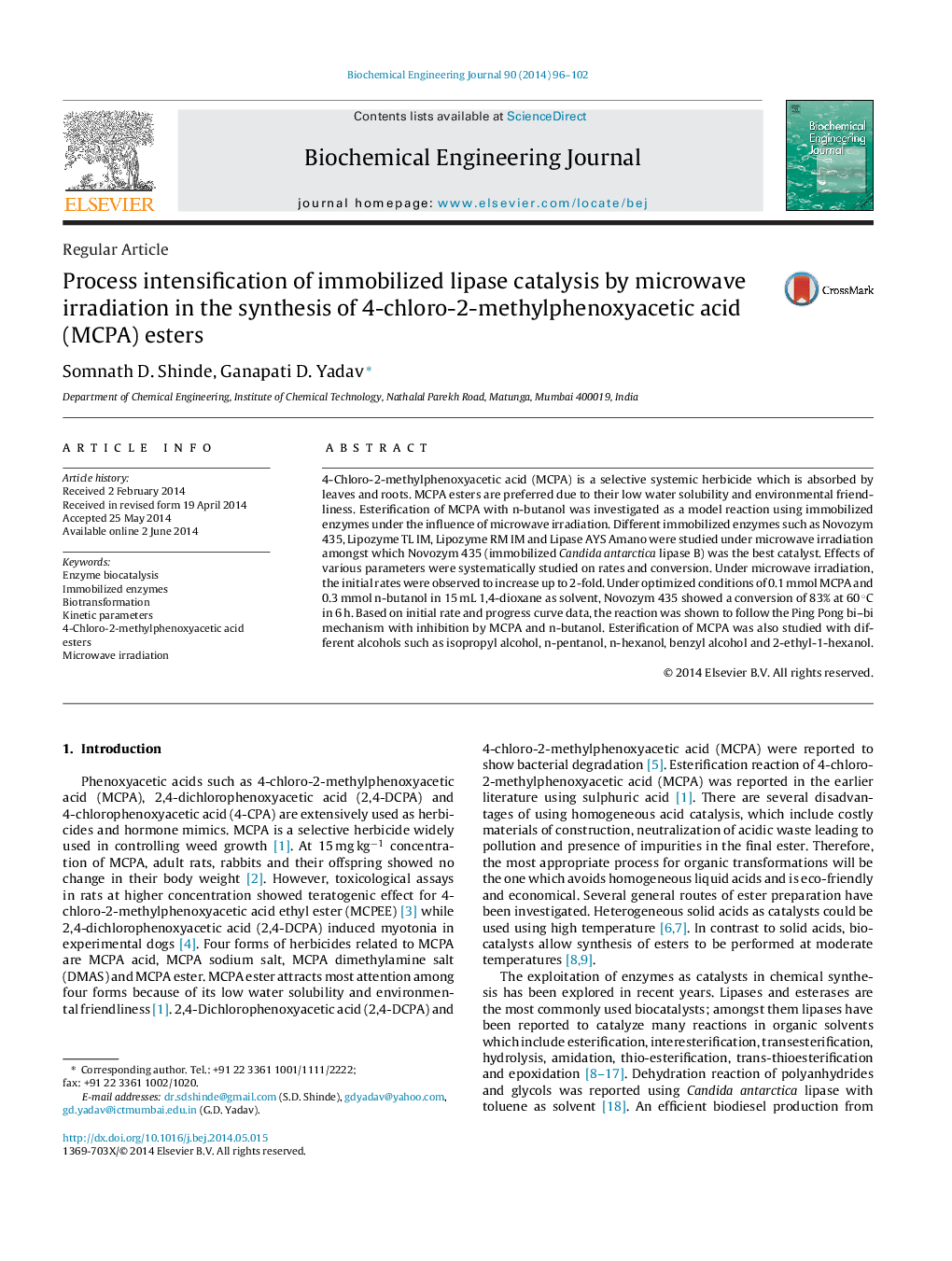| کد مقاله | کد نشریه | سال انتشار | مقاله انگلیسی | نسخه تمام متن |
|---|---|---|---|---|
| 2997 | 147 | 2014 | 7 صفحه PDF | دانلود رایگان |

• Esterification of 4-chloro-2-methylphenoxyacetic acid (MCPA) with n-butanol using immobilized lipases.
• Novozym 435 was the best catalyst.
• Process intensification using microwave irradiation and lipase catalysis.
• Ping Pong bi–bi mechanism with inhibition by both acid and alcohol.
• Esterification with different alcohols such as isopropnol, n-pentanol, n-hexanol, 2-ethyl-1-hexanol and benzyl alcohol.
4-Chloro-2-methylphenoxyacetic acid (MCPA) is a selective systemic herbicide which is absorbed by leaves and roots. MCPA esters are preferred due to their low water solubility and environmental friendliness. Esterification of MCPA with n-butanol was investigated as a model reaction using immobilized enzymes under the influence of microwave irradiation. Different immobilized enzymes such as Novozym 435, Lipozyme TL IM, Lipozyme RM IM and Lipase AYS Amano were studied under microwave irradiation amongst which Novozym 435 (immobilized Candida antarctica lipase B) was the best catalyst. Effects of various parameters were systematically studied on rates and conversion. Under microwave irradiation, the initial rates were observed to increase up to 2-fold. Under optimized conditions of 0.1 mmol MCPA and 0.3 mmol n-butanol in 15 mL 1,4-dioxane as solvent, Novozym 435 showed a conversion of 83% at 60 °C in 6 h. Based on initial rate and progress curve data, the reaction was shown to follow the Ping Pong bi–bi mechanism with inhibition by MCPA and n-butanol. Esterification of MCPA was also studied with different alcohols such as isopropyl alcohol, n-pentanol, n-hexanol, benzyl alcohol and 2-ethyl-1-hexanol.
Figure optionsDownload as PowerPoint slide
Journal: Biochemical Engineering Journal - Volume 90, 15 September 2014, Pages 96–102